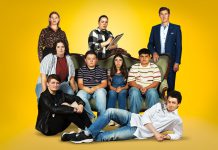Dr. Dennis Harrigan shares bone collection with second graders
at Luigi Aprea
Sara Suddes – Staff Writer
ss*****@************ch.com
GILROY
Second graders at Luigi Aprea School “oohed” and “aahed” at Dr. Dennis Harrigan’s collection of animal bones and fossils. The children screamed and giggled when Harrigan showed them a sample of fossilized dinosaur droppings.
“The kids love it,” said Georgia DeMesa, the second grade teacher who organized Dr. Harrigan’s Friday visit. “Dr. Harrigan teaches the children about subjects that are at the forefront of the science curriculum in second grade.”
Harrigan, 51, is a veterinarian at Gilroy Veterinary Hospital on Monterey Road and has been sharing his collection and knowledge with students ever since his two grown children attended Rod Kelley and Rucker 10 years ago.
Harrigan, who has been a veterinarian in Gilroy for 20 years, began his presentation to the 130 second graders at Luigi Aprea by walking the students through a standard checkup. His patient was Fluffy the kitten. Harrigan examined the kitten’s eyes, teeth, and belly. He advised the children to brush their cats’ teeth and told them how he would take their pets’ temperatures if they were at the vet. He called on several volunteers to assist him with his presentation. The children waved their hands wildly every time he asked a question or requested a volunteer,
“It’s amazing how much they pick up from this presentation,” Harrigan said. “They are like little sponges … they’re very knowledgeable.”
After Harrigan put the tiny kitten back in its cage, he moved on to the impressive assortment of animal skulls that were lying on the desks. He compared the eye position, tooth shape and nose function of several different skulls in an effort to teach the students about comparative anatomy. He showed the students the skull of a Canadian lynx that he acquired in Alaska and explained that its teeth were made to rip and tear meat. The second graders identified the animal as a carnivore.
“I liked seeing the skulls,” student David Yepez-Gomez said. “I liked seeing the ones that eat meat and the ones that eat plants.”
“He taught us how the horse has flat teeth so he can chew on grass and the mountain lion has sharp teeth to bite into other animals,” student Haley Berube said.
The second graders also easily identified an alligator skull after Harrigan held up the skulls of a fox, coyote, domestic dog, beaver and skunk. Harrigan acquired many of the skulls and bones as gifts or during his vacations spent fly fishing, hiking and backpacking.
Harrigan moved from comparing the skulls to describing the vertebrae and rib bones of many different animals.
Interested in animals and anatomy since he was a child, Harrigan grew up around animals and was a Future Farmer of America. Harrigan said he loves seeing the students so excited about what he shows them.
“At 7 and 8, these guys can pull up all sorts of information,” he said. “It’s a shame that something gets shut off at a certain age when this stuff isn’t so exciting to them anymore.”














